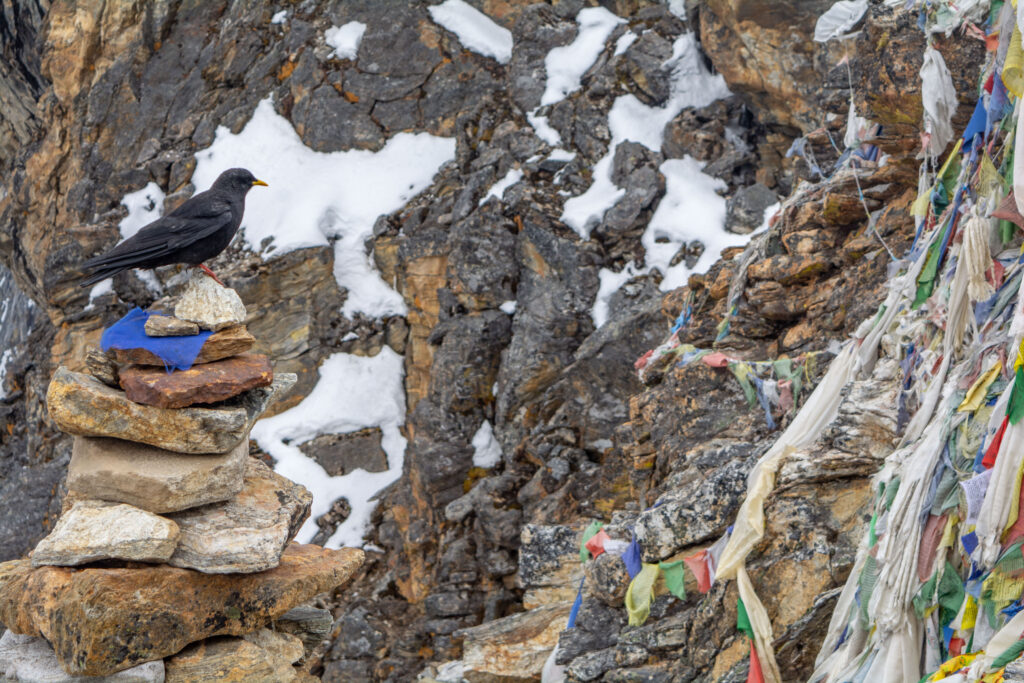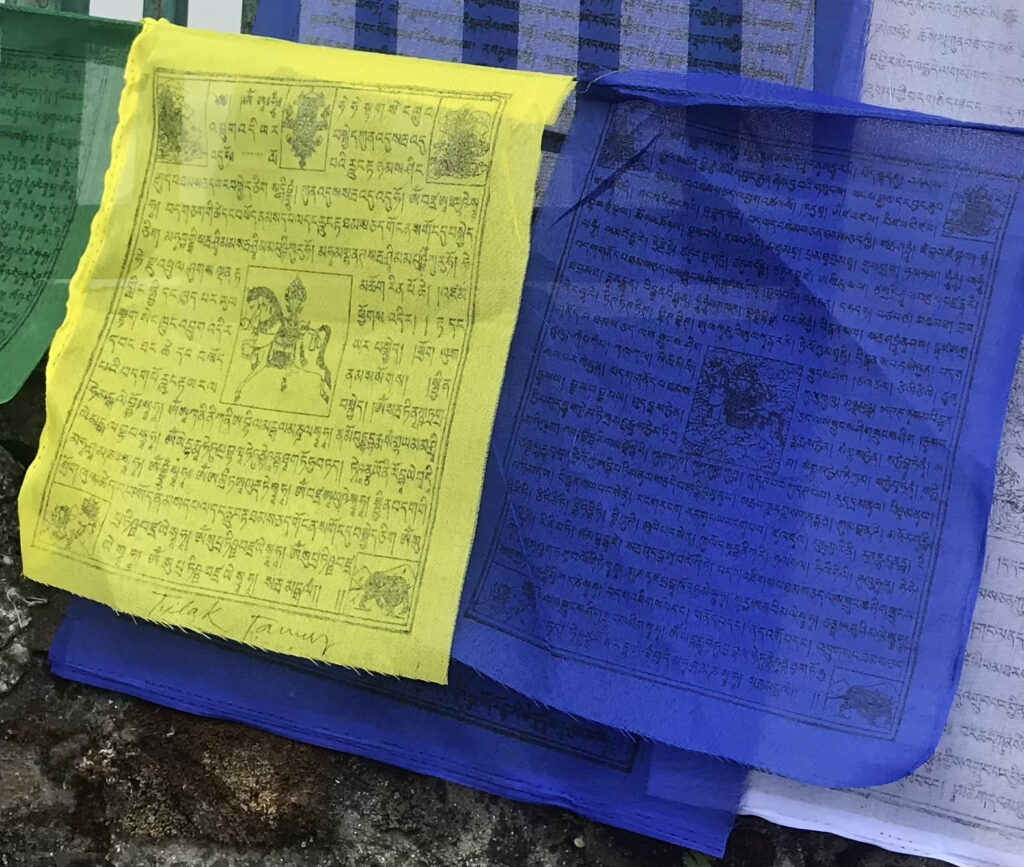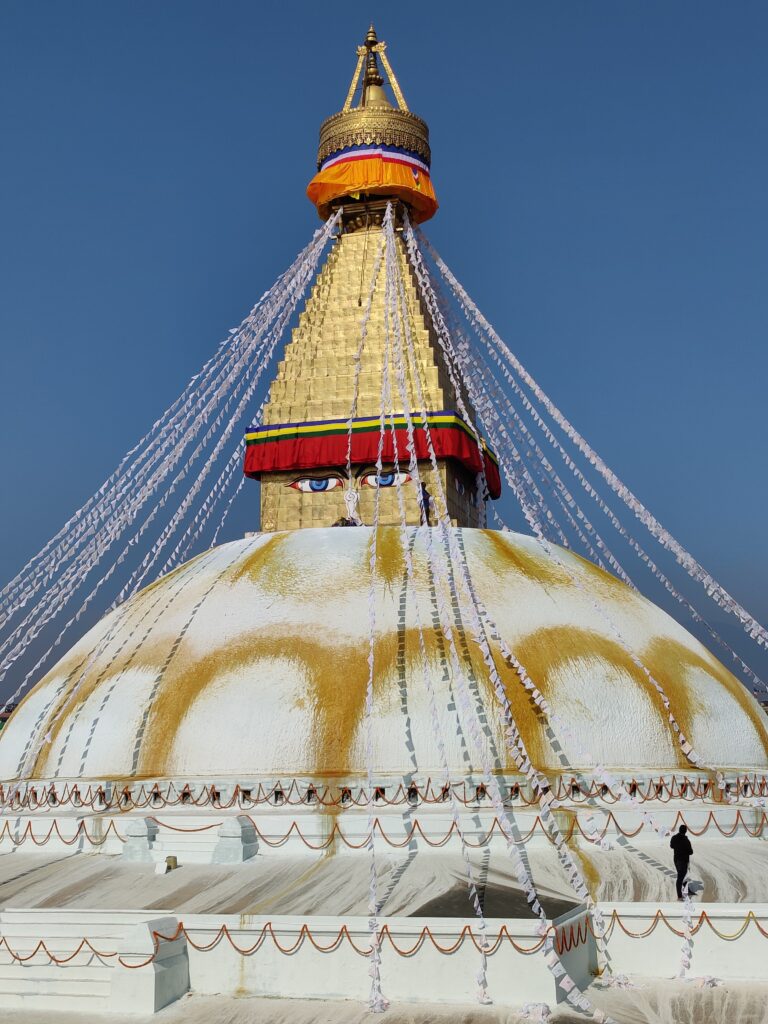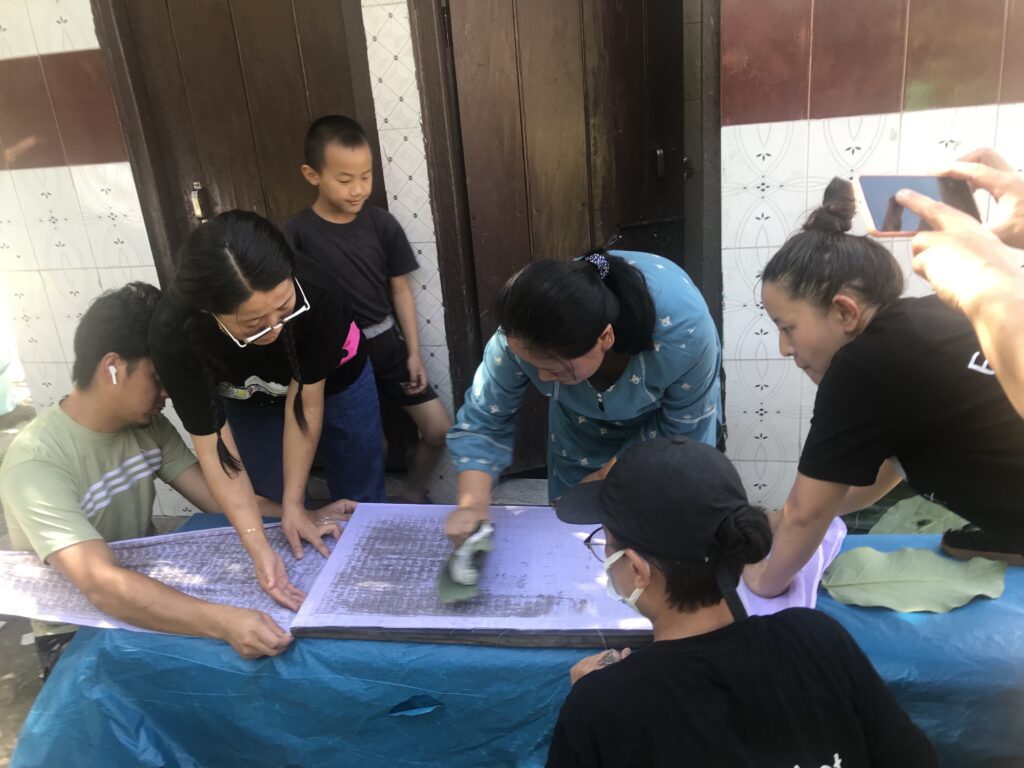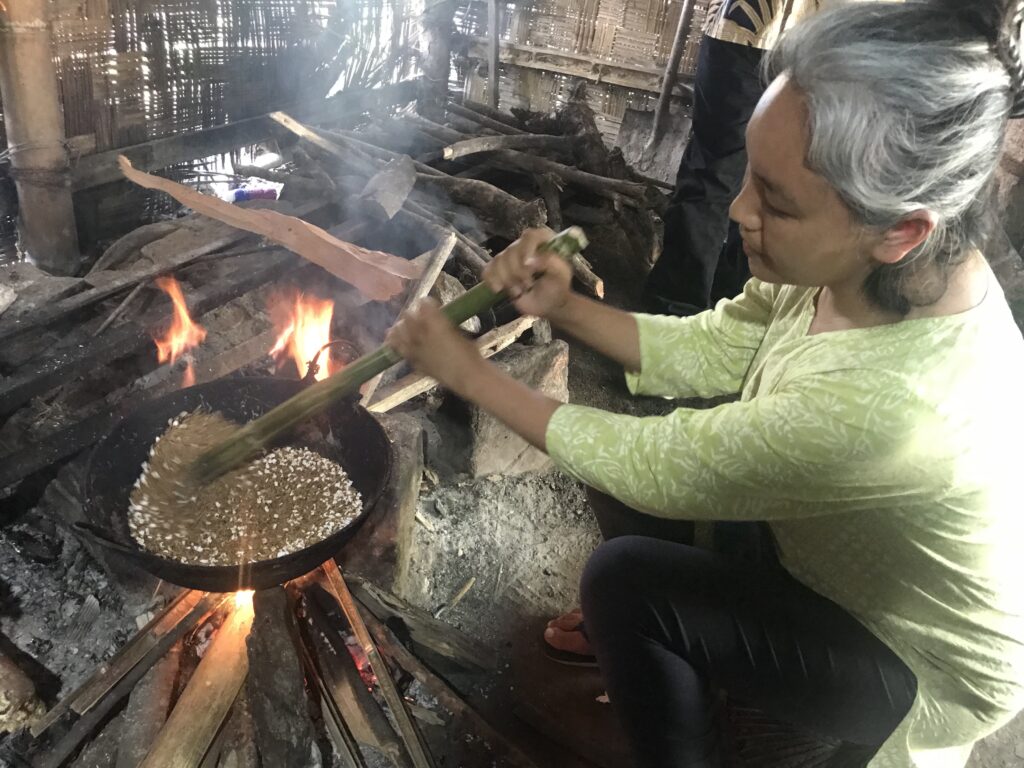Replacing Plastic Prayers With Biodegradable Blessings in the Himalayas
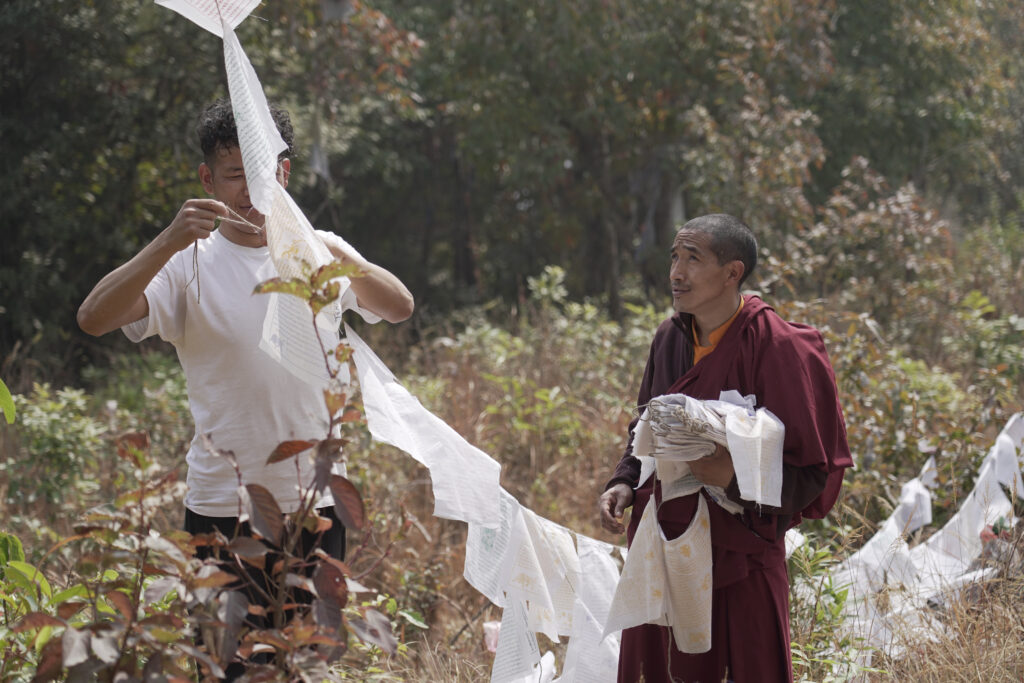
In the summer of 2022, one of us, Kalzang Dorjee Bhutia, brought gifts to his relatives with babies in northeast India. In their Sikkimese Bhutia community, new mothers receive chicken, cash, and other items known as Bya-kay—literally, “bringing a chicken.”
Among the Bya-kay well-wishers presented, he noticed offering scarves, or khatak. Ritual specialists also raised prayer flags, or lungta, outside the residences of new babies. Both offering scarves and prayer flags are meant to fend off seen and unseen threats to newborns, such as illnesses and malevolent spirits. Accustomed to the offerings, Kalzang was instead interested in what they were made from: synthetic plastics such as polyester rather than biodegradable cotton and paper that constituted khatak and lungta traditionally.
Do the materials they are made from impact the aspirations behind these objects? Can a prayer flag or scarf made from plastic—a major pollutant and poison—convey blessings for births and other beginnings?
Beyond Sikkimese Bhutia births, prayer flags and offering scarves figure into the daily lives and rituals of diverse communities throughout the Himalayas, the Tibetan plateau, and adjoining areas of inner Asia. For centuries, these cloth objects have protected the region’s human and spirit-like beings against illness, death, birth, and seasonal change.
But since the 1970s, prayer flags and scarves mass-produced from cheaper synthetic fibers have become more common than ones handwoven from natural materials. The synthetics take centuries to decompose. A growing number of Himalayan people worry that these objects shed plastic bits, which are poisoning their snow, streams, spirits, and people.
As scholars and activists who live or work in the Himalayas, we have been exploring the complex reasons synthetic fibers have spread through the region—and ways to scale them back for pollutant-free futures. We have found sustainable alternatives, which were used until recently in local communities and are ready to be reclaimed.
MICROPLASTICS ON MOUNTAIN PEAKS
We can’t help but be aware of the issue of synthetic fibers in the Himalayas. A scholar of Sikkimese religions and cultures, Kalzang saw plastic khatak and lungta when visiting his relatives’ newborns. Co-author Ang Dolma Sherpa, an entrepreneur and environmental activist based in Kathmandu, noted the abundance of synthetic scarves at a family funeral a decade ago. Local communities fret about bunched-up prayer flags stuck in glaciers and rivers that are already threatened by climate change.
The matter became international news in 2020 when a group of scientists reported several red and blue polyester strings more than five miles above sea level near Mount Everest’s peak. Along with dozens more threads downslope, these microplastics were likely shed from the high-performance trekking gear worn by hundreds of climbers and guides who scale Everest annually. To the global media and commentators, the fibers emblemized the problems of over-tourism and plastics pollution—now found from Earth’s highest mountain to its deepest ocean trench.
We recognize that the trekking industry brings plastics—but think the story in international media is too often only about tourists who visit in lieu of the experiences of local communities.
Through annual ritual traditions, local people communicate with and care for Mount Everest, or Jomolangma as she is called in the local Sherpa language. Like the Bya-kay, where offered khatak and lungta support the life force of infants, people raise prayer flags to protect Jomolangma and other interdimensional residents of the Himalayas.
LUNGTA AND KHATAK IN HIMALAYAN LIVES
A local word for prayer flags, lungta is often translated as “wind horse,” or more meaningfully explained as “carry prayers on the wind.” Featuring images of their namesake wind horses, lungta prayer flags are a significant symbol in Indigenous Bõn and Buddhist traditions. They also appear in many other connected cosmologies on and around the Tibetan plateau, including in Nepal, Bhutan, India, Mongolia, and Tibetan cultural areas of the People’s Republic of China.
Throughout the region, prayer flags flutter at different times: during illness, with aspirations for the health of the person; upon death or for death memorial anniversaries; and at the new year, with hope for abundance and well-being to be shared among all of Earth’s beings.
The actual aspirations that accompany the hoisting of prayer flags are richer and more complex. They create relationships between the humans who offer them and the more-than-humans who live in the mountains and are, indeed, the mountains: powerful protectors who preside over deities, spirits, and forces that govern everyday events.
By raising prayer flags above the mundane parts of the everyday, a person’s life forces also lift. This is a community undertaking: In local beliefs, an individual is more than oneself. An individual constitutes one part of a community of forces, deities, and humans.
Offering scarves, too, help build relations with humans and powerful more-than-humans. People buy or receive khatak as gifts. They may then keep the scarves as blessings or dispose of them with fire.
MATERIALS MATTER
Historically, the people who needed lungta crafted them from thin cotton and paper. With woodblocks, they printed prayers and images of horses and deities using ink made from cooked rice, local black soil, and water. These flags would deteriorate in the strong winds of the Himalayas, sometimes only lasting for a few months or at most a year. Any remnants would be burned, with prayers that their aspirations would pervade with smoke into the universe.
About 50 years ago, synthetic fabrics such as polyester became more widely available in India and Nepal. These plastic prayer flags lasted longer and could be mass-produced more quickly. The innovations had drawbacks: Due to their durability and affordability, the fabrics spread litter everywhere. Synthetic offering scarves posed the same issue.
This synthetic waste has led to vibrant debates among Buddhists and other communities in the region. Our team has been part of these conversations—and is exploring solutions.
At the funeral of a family member in 2011, Ang Dolma noticed the challenges of disposal when the burning of synthetic lungta and khatak released noxious fumes. She began to investigate alternatives and found that until recently, Sherpa communities had used biodegradable materials. This led her to found Utpala Craft, a company that produces khatak from cotton and bamboo linen as well as lungta from cotton sewn on hemp chords.
Utpala is a woman-owned and -operated company. Working flexible hours that allow for child care, groups of women run the warehouse in Patan, a city near Kathmandu, Nepal. Utpala’s biodegradable prayer flags gained international recognition in 2021 after they were raised at the Boudhanath stupa, a major pilgrimage and tourist landmark in Kathmandu.
But challenges remain. For example, Utpala’s flags, which are intentionally left white, stand out compared to multicolored synthetic ones, which feature the colors of the five elements: red for fire, green for water, blue for sky, yellow for earth, and white for space. However, white is actually the traditional color for flags. Ang Dolma has faced some questioning from Buddhists in Nepal about the use of white. In response, she has been promoting awareness of traditional materials and colors—and training others in the techniques.
Affordability poses another challenge. Synthetic fabrics are far cheaper than biodegradable alternatives. Ang Dolma is pursuing grants and other forms of collaboration to sell her khatak and prayer flags at lower prices.
RECLAIMING ANCESTRAL KNOWLEDGE
Kalzang has also been making traditional prayer flags, as he did as a child in west Sikkimese rural communities. He remembers offering vegetables and eggs to people who owned woodblocks of lungta so he and his brothers could borrow the printing devices. The brothers would then print as many prayer flags as they needed for various ritual events.
In 2022, our team, including Ang Dolma and Kalzang, along with Pasang and Amy, scholars of Buddhism and climate change, met for a dynamic set of discussions. Our goal was to strategize about how to support and promote sustainable offering scarves and prayer flags. We traveled to a village in rural west Sikkim to learn more in a workshop held at Kalzang’s home.
We were accompanied by local Sikkimese young people who enthusiastically participated in this opportunity to make prayer flags in the traditional way. As well as exchanging knowledge about ink making and printing techniques, the team developed a plan for further research. For example, we intend to recruit scientists to test the biodegradability of different prayer flags and offering scarves.
In the long term, the team hopes to make information about traditional, sustainable prayer flags and offering scarves widely available—helping people care for the human and more-than-human residents of the Himalayas and beyond.





























